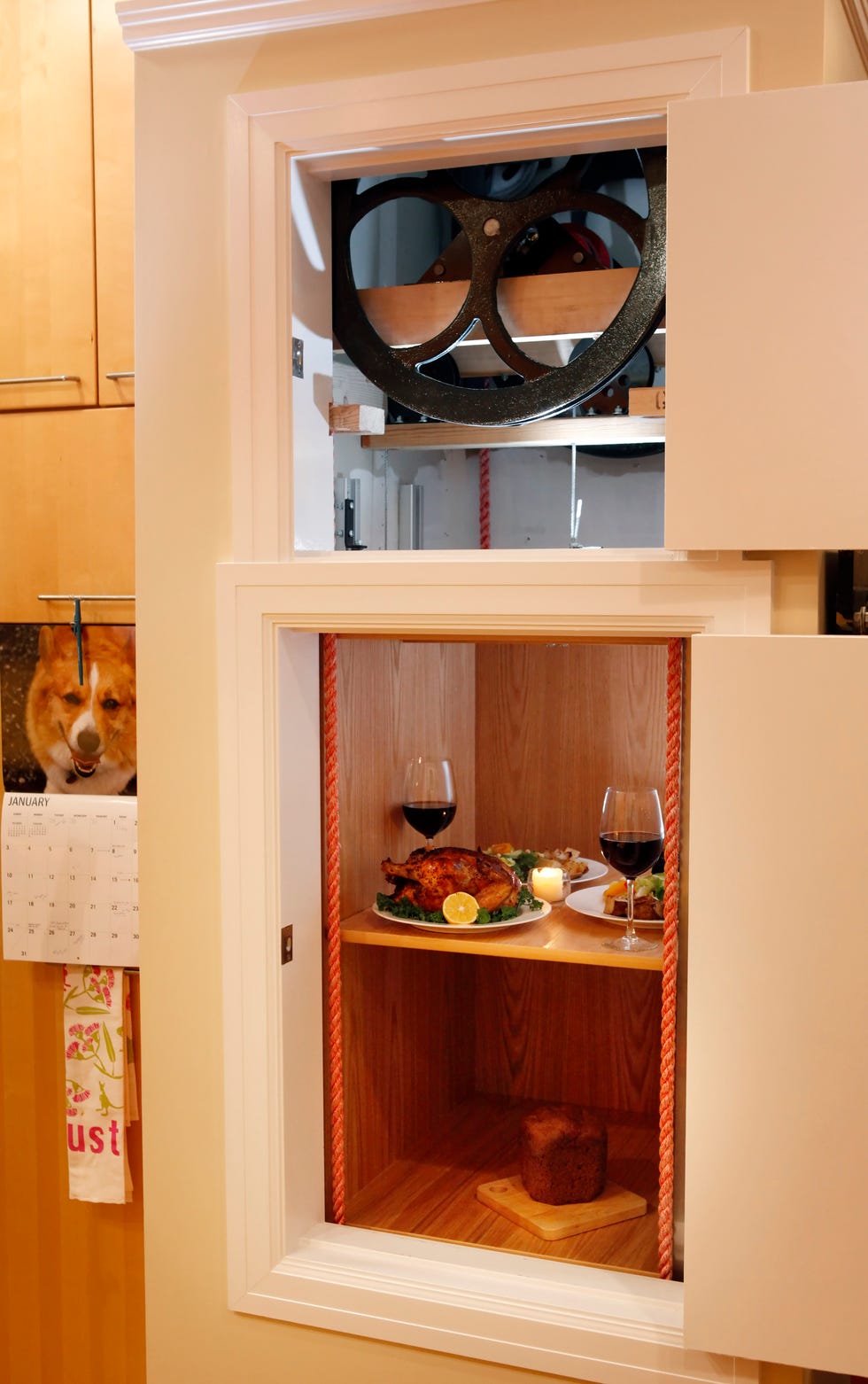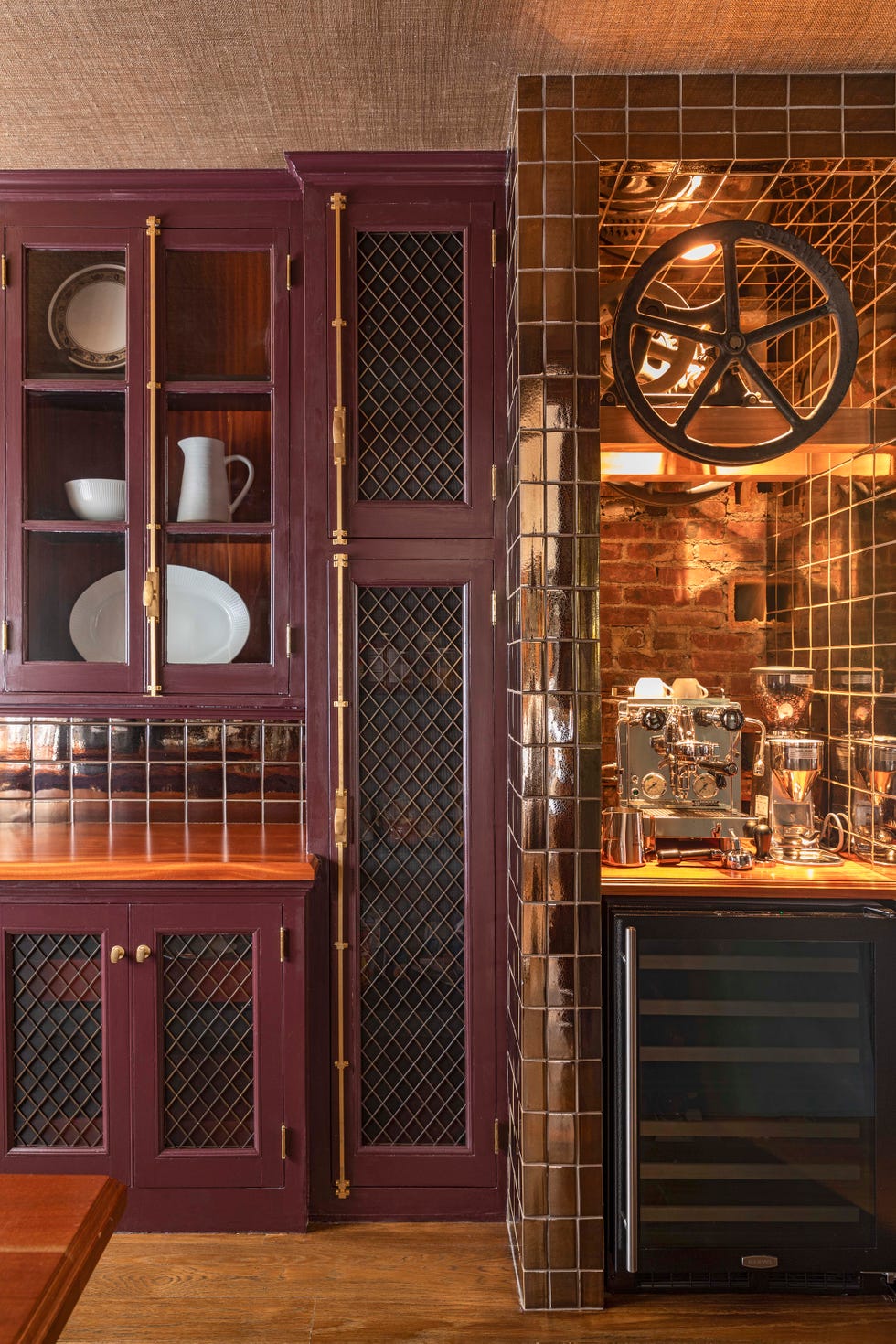As design editors, we're always keeping our eyes peeled for interesting design elements—even when watching our favorite shows. And, when it comes to The Watcher, Netflix's buzzy new series about a mysterious New Jersey home, it seems like we're not alone. Searches for the term "dumbwaiter" have skyrocketed since the series premiere, owing largely to a scene in the first episode. In the scene, homeowner Derek Broaddus (Bobby Cannavale) references the appliance, which, he's told, is a national treasure in the historic home.
While The Watcher isn't the first to cast this old-school feature in a spooky role—dumbwaiters also made an appearance in Mike Flannigan's The Haunting of Hill House, and earlier, The Sixth Sense—the show has officially linked the now iconic appliance with the haunted house trope. Since it seems fans are wondering (much like the Broadduses' young son, who climbs into it thinking it's an elevator) just what exactly a dumbwaiter is, we figured we'd provide some context. Read on for all you need to know.
What exactly is a dumbwaiter?
If you watched The Watcher (no pun intended), you got the general gist, but for the uninitiated: A dumbwaiter is essentially a miniature elevator, operated with a pulley system. Dumbwaiters were designed to transport food and other necessities between floors in large houses. A dumbwaiter typically consists of a small cart, which travels up and down a shaft on rails to deliver items to floors above and below, essentially performing the very basic tasks of—you guessed it—a mute waiter.
What is the history of the dumbwaiter?
Dumbwaiters first gained popularity in the United States in the mid-19th-century. In 1883, New York inventor George W. Cannon secured a patent for the first mechanical dumbwaiter. These automatic models were especially useful in the brownstones and townhouses of New York City, where vertical living meant staff often had to lug items up and down several flights of stairs.
By the beginning of the 20th century, dumbwaiters had become immensely popular throughout New York as well as London. In addition to being used in homes, they were often installed in city restaurants, where a kitchen might be housed below the dining space.
Are dumbwaiters still used today?
Though they may not be national treasures, per se, as claimed in The Watcher, dumbwaiters are interesting historical elements still found in 18th and 19th-century homes, where they can be used as intended or (more commonly, since often the pulley system hasn't held up over time), transformed for another use. In a historic New Jersey home, for example, designer Birgitte Pearce paid homage to the original dumbwaiter by preserving its pulley system as a decorative element above a bar.
In a Brooklyn brownstone, meanwhile, designer Sarah Hill repurposed the dumbwaiter shaft as a cozy dining nook. Indeed, in a time where every square inch is precious space, it's often tempting to reclaim the square footage a dumbwaiter takes up, even if it's not much!
But if it's a working dumbwaiter you're looking for, they do exist! If you're not lucky enough to stumble on a historic one, companies like AmeriGlide will install a custom one in your home. Just don't let your kids get stuck in it!
Listen to Dark House for a more in-depth look at the real story of The Watcher house.
Follow House Beautiful on Instagram.














